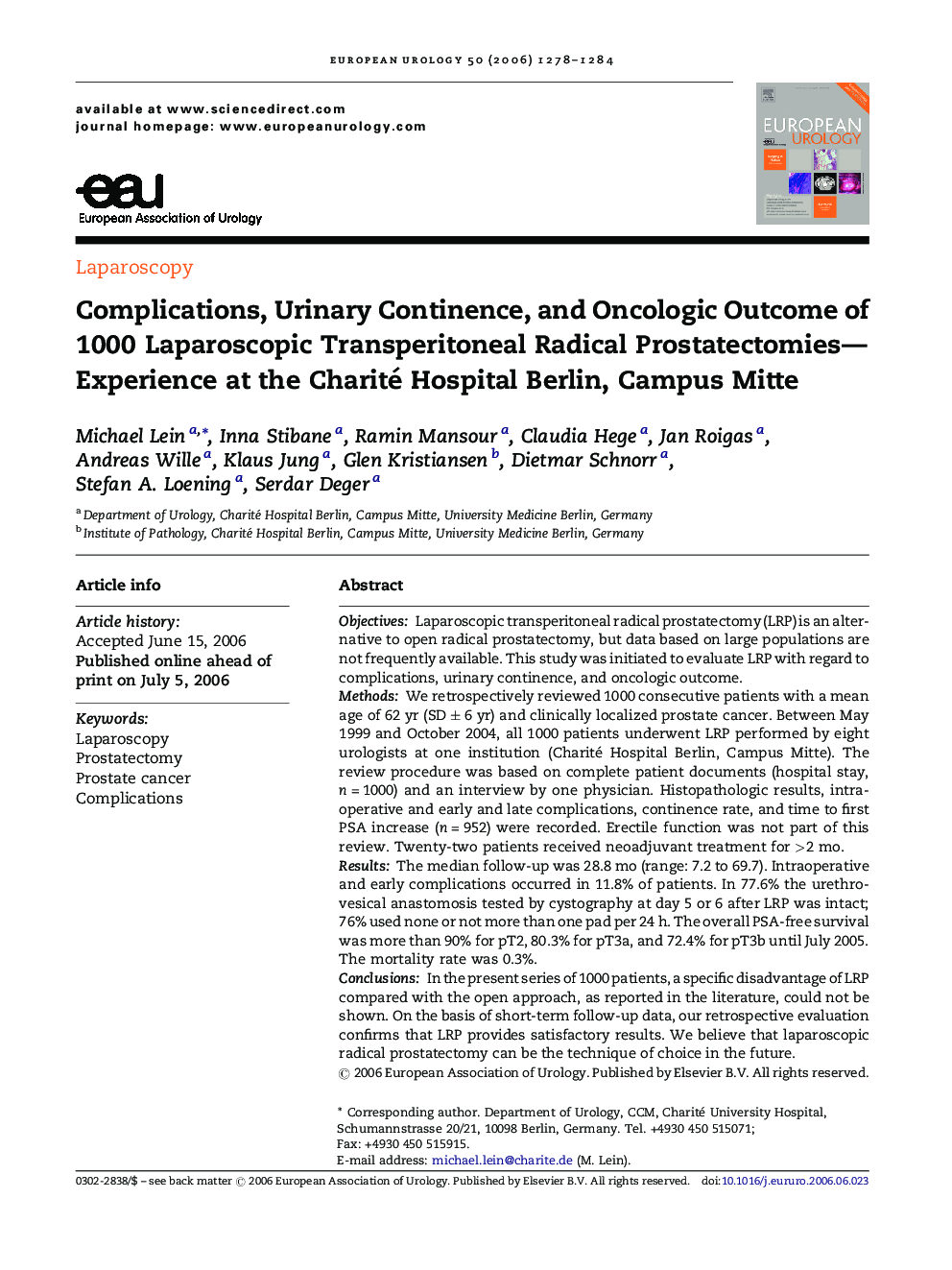| Article ID | Journal | Published Year | Pages | File Type |
|---|---|---|---|---|
| 3926740 | European Urology | 2006 | 7 Pages |
ObjectivesLaparoscopic transperitoneal radical prostatectomy (LRP) is an alternative to open radical prostatectomy, but data based on large populations are not frequently available. This study was initiated to evaluate LRP with regard to complications, urinary continence, and oncologic outcome.MethodsWe retrospectively reviewed 1000 consecutive patients with a mean age of 62 yr (SD ± 6 yr) and clinically localized prostate cancer. Between May 1999 and October 2004, all 1000 patients underwent LRP performed by eight urologists at one institution (Charité Hospital Berlin, Campus Mitte). The review procedure was based on complete patient documents (hospital stay, n = 1000) and an interview by one physician. Histopathologic results, intraoperative and early and late complications, continence rate, and time to first PSA increase (n = 952) were recorded. Erectile function was not part of this review. Twenty-two patients received neoadjuvant treatment for >2 mo.ResultsThe median follow-up was 28.8 mo (range: 7.2 to 69.7). Intraoperative and early complications occurred in 11.8% of patients. In 77.6% the urethrovesical anastomosis tested by cystography at day 5 or 6 after LRP was intact; 76% used none or not more than one pad per 24 h. The overall PSA-free survival was more than 90% for pT2, 80.3% for pT3a, and 72.4% for pT3b until July 2005. The mortality rate was 0.3%.ConclusionsIn the present series of 1000 patients, a specific disadvantage of LRP compared with the open approach, as reported in the literature, could not be shown. On the basis of short-term follow-up data, our retrospective evaluation confirms that LRP provides satisfactory results. We believe that laparoscopic radical prostatectomy can be the technique of choice in the future.
